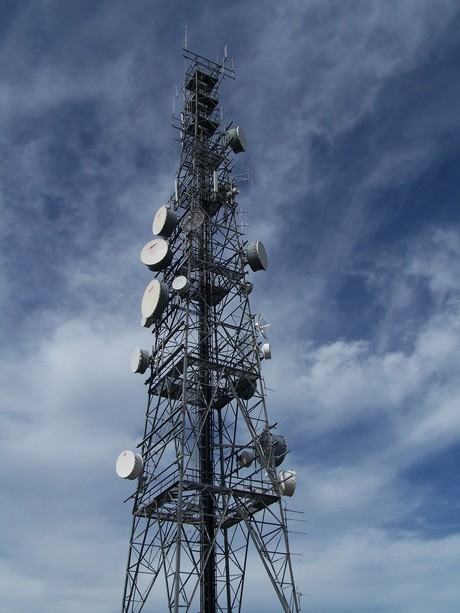CCEP to bring NSW's next-gen network

The NSW government’s Critical Communications Enhancement Program is the first step in state’s Operational Communications Strategy.
In its annual Budget released in June, the NSW state government has allocated $178 million over two years to implement the Critical Communications Enhancement Program (CCEP), which aims to deliver “an enhanced Government Radio Network to improve emergency and day-to-day operational communications for NSW Government agencies and essential services”.
The program will be delivered by the NSW Telco Authority, a statutory authority within the NSW Department of Finance, Services and Innovation, tasked with progressing sector-wide reform and delivery of government operational communications.
In a statement, the Authority said it welcomed the funding Budget announcement, which would enable it to continue “state-wide implementation activities”, including the “detailed design of the enhanced GRN across NSW and progressive implementation of the program in the North Coast area of the state”.
According to the Authority, it is estimated that over the three years to 2020, 65% of extant NSW government radiocommunication assets will reach, or be nearing, end of life. It would cost more to replace these separate networks than to deliver an improved, resilient shared network. Reinvesting in separate agency networks would also have continued the duplication of capital and operational costs.
The allocation also provides funding for the five emergency service organisations (ESOs) — NSW Police Force, NSW Ambulance, Fire and Rescue NSW, NSW Rural Fire Service and the NSW State Emergency Service — to remain operational while the CCEP is being delivered.
According to the Authority, the CCEP “is the first step in realising the NSW Government’s Operational Communications Strategy. This whole-of-government strategy outlines a new direction in the planning, delivery and management of radio and related communication services for the NSW government sector.”
The CCEP is consolidating the large number of overlapping and independent radio networks operated by ESOs and other NSW government agencies. Progressive connectivity will deliver an enhanced shared network for the state. It paves the way to shared networks in other states and territories and a common technology platform of next-generation critical communications technologies in NSW.
Having a single shared network for mission-critical communications in NSW will enable network users to share information and coordinate responses to critical incidents, such as road accidents, floods and fires.
According to the Authority, an independent study (Deloitte, 2015) identified significant benefits from a shared radio network, with improved coverage and capacity providing better service delivery to communities, such as:
- reduction in regional road accident deaths;
- reduction in cost of cardiac mortality;
- reduction in the economic cost of serious crime;
- reduction in the economic cost of floods;
- reduction in the cost of structural fires;
- reduction in the economic cost of bushfires.
Pilot project
Initial work on the CCEP commenced in March 2016, and during 2016–17 year the Authority undertook three key projects:
- A pilot program to extend GRN coverage in the north-west region of the state.
- A state-wide audit that reviewed over 2600 radio sites and almost 27,000 radio assets.
- Development of a preliminary design of the enhanced GRN across the majority of NSW.
The pilot program increased shared network coverage in the region by 3314 square kilometres and greatly increased individual agencies’ coverage by consolidating agency networks.
The NSW Rural Fire Service, State Emergency Service, Fire and Rescue and other government agencies previously all had their own radio networks in the pilot area, with each having different coverage and none able to cover the whole area.
The pilot region became ready for frontline agency use in January 2017.
According to the Authority website, the CCEP will continue over the next several years with some “early enhancements being progressively achieved during this time” and existing and future GRN users “will soon be able to take full advantage of improved network coverage in the pilot region”.
The Authority has stated that the CCEP will:
- increase the level of shared coverage available to NSW government agencies and essential services from less than 35% of the state at present to over 80%;
- improve coverage in urban areas from 96% to close to 100%;
- provide better network capacity, availability and resilience designed for public safety standards, which will enhance emergency and day-to-day operational communications.
In addition to beginning work on the CCEP, over the past 24 months the Authority has also: improved the resilience and reliability of the GRN by upgrading backhaul at more than 130 sites, implementing 3G/4G connectivity and deploying cells on wheels; completed a detailed cost and benefit analysis of a public safety mobile broadband capability for NSW.
“As significant natural disasters and other major incidents have shown, operational communications are essential to ensure that government can effectively respond, reducing risks to frontline staff, the community, property and infrastructure,” said the Authority’s chair, Rod Sims. “By the continued coordination of our efforts, we can achieve more for our frontline staff and the community.”
Why P25 technology remains a good fit for public safety communications
Digital LMR technology ensures police officers, firefighters and emergency management teams can...
From past to present: leveraging satellite data for better disaster resilience
Whether monitoring flood-prone regions or assessing wildfire-prone landscapes, historical...
Lancashire Police adds in-car video to full vehicle fleet
Motorola Solutions' M500 in-car video solution observes a vehicle's environment from...





